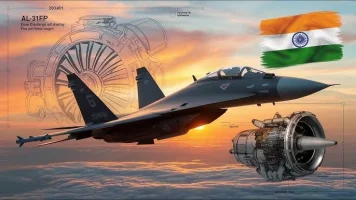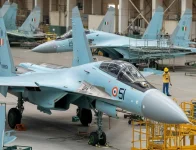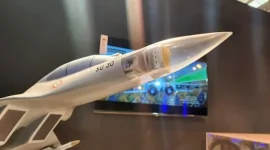
The Indian Air Force (IAF) is embarking on a significant modernization program for its fleet of 259 Sukhoi Su-30MKI fighter jets. The first phase of this upgrade will equip 80 aircraft with cutting-edge technologies, including an indigenously developed Active Electronically Scanned Array (AESA) radar.
This move signifies a major stride in India's self-reliance in defence technology, as the country shifts from its initial plan of integrating technology derived from the Russian Su-57 fighter jet to utilizing homegrown advancements.
The Uttam AESA Radar: A Game-Changer
The Defence Research and Development Organisation (DRDO) has issued a call for partners to support the development, integration, and testing of an advanced AESA radar for aircraft applications. While the specific platform is not officially disclosed, industry sources indicate that the radar is intended for the Su-30MKI upgrade.The AESA radar, known as Uttam, was originally developed for the Tejas Mk1A fighter jet but has proven to be a versatile solution that can be adapted for other platforms. Its integration into the Su-30MKI is expected to significantly enhance the aircraft's combat capabilities, providing superior detection, tracking, and target identification compared to traditional radars.
Manufacturing and Production
The DRDO's Electronics and Radar Development Establishment (LRDE) has invited expressions of interest from potential partners to manufacture the Uttam AESA radar based on DRDO's design. This move aims to leverage the expertise and infrastructure of private sector companies to accelerate production and ensure cost-effectiveness.The manufacturing contracts are likely to be awarded to either Astra Microwave or Bharat Electronics Limited (BEL), both of which have a proven track record in radar technology and manufacturing. The selection process will be based on the lowest price offered by the vendors, ensuring value for money while maintaining high standards of quality.
Strategic Implications
The upgrade of the Su-30MKI fleet comes at a crucial juncture, as the Tejas Mk1A program faces delays due to engine-related issues. The enhanced capabilities of the upgraded Su-30MKIs will be vital in maintaining India's air superiority until the Tejas Mk1A becomes fully operational.The integration of indigenous technologies like the Uttam AESA radar not only boosts the IAF's combat readiness but also reinforces India's commitment to self-reliance in defence.
This phased upgrade represents a significant milestone in the IAF's modernization efforts and is expected to pave the way for further advancements in India's defence aviation sector.



